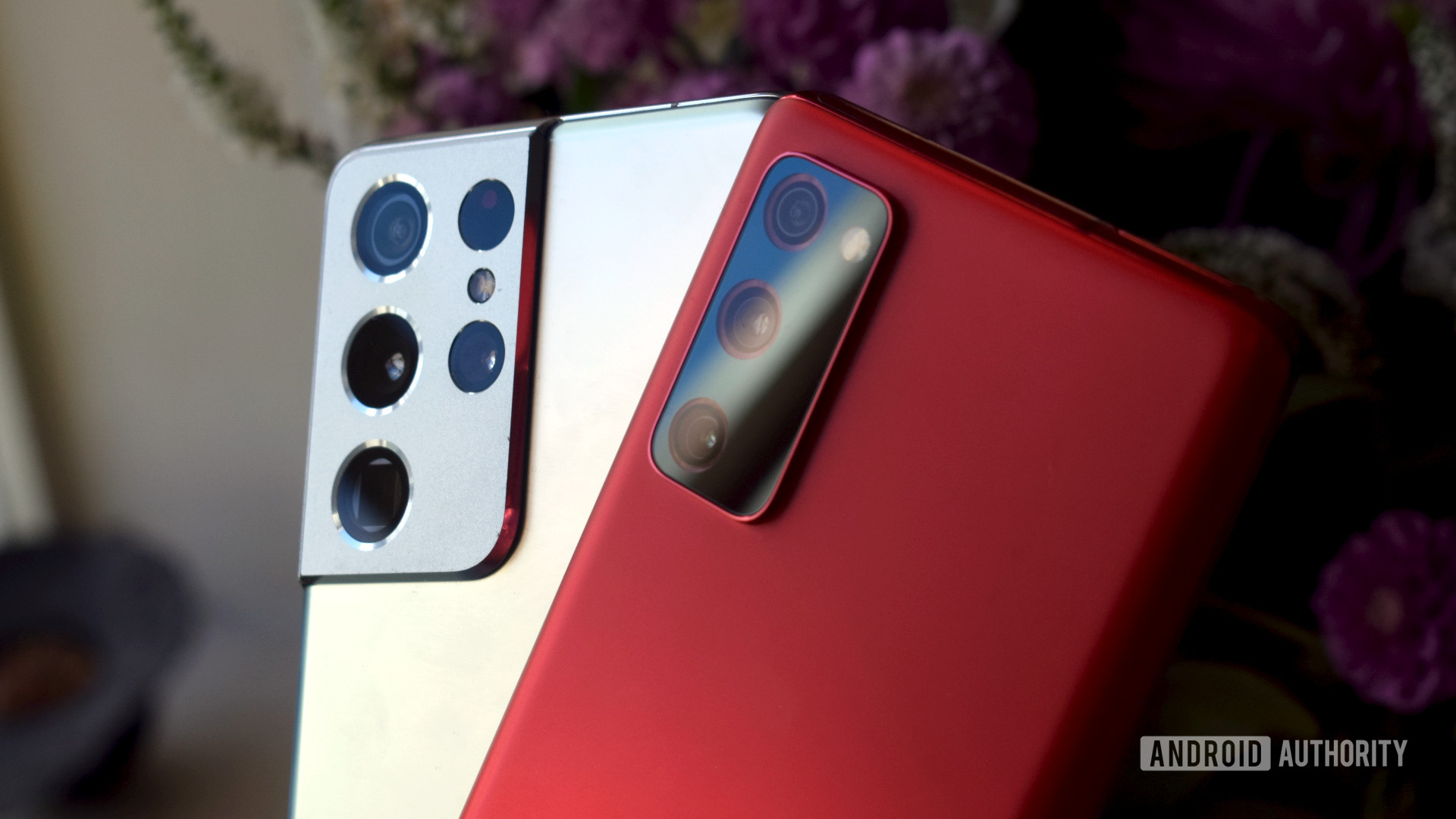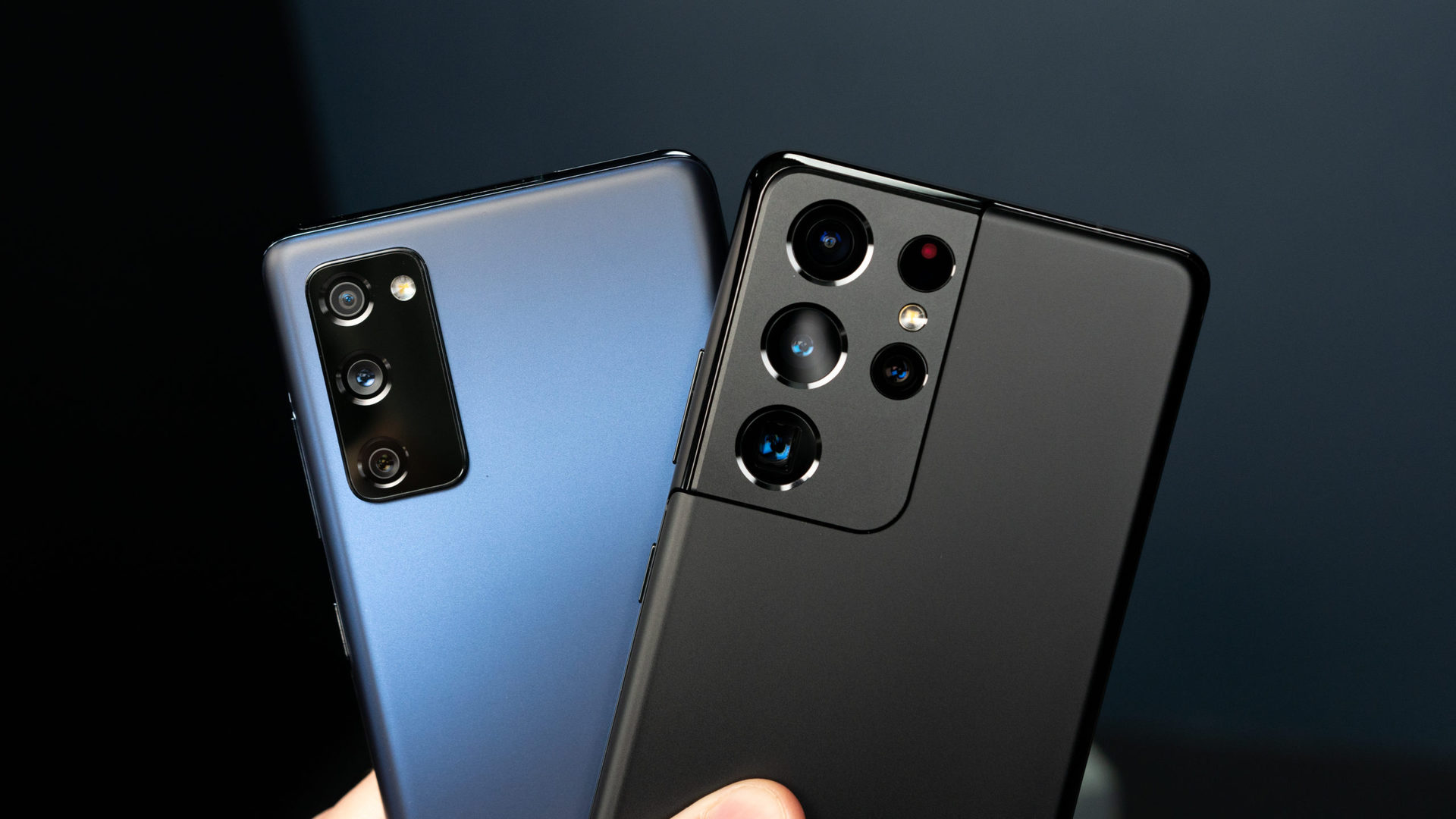Affiliate links on Android Authority may earn us a commission. Learn more.
Value for money is important, but we still need phones like the Galaxy S21 Ultra

In the last nine months or so, Samsung has released more flagship smartphones to suit a wider range of customers than ever before. For the more budget-conscious consumer, there’s the Galaxy S20 FE that launched to critical acclaim in late September 2020. This more value-oriented pricing strategy seeped into Samsung’s 2021 flagship launch too. The standard Galaxy S21 model costs $200 less than 2020’s Galaxy S20. Samsung has made some of its latest products quite affordable, finally tackling the allure of cheaper flagship phones from Chinese brands.
Then there’s the Samsung Galaxy S21 Ultra. A colossal $1,199 technological behemoth featuring the very latest and greatest that Samsung has to offer — with an eye-watering price to match. Even here though, Samsung has reduced the price of its S21 Ultra down to the same price as last year’s S20 Plus.
Read more: Samsung Galaxy S21 buyer’s guide — everything you need to know
We don’t know whether Samsung’s turn to lower pricing is a well-timed reaction to the economic fallout of COVID-19 or a more concerted effort to rejuvenate falling flagship sales. According to Statista, Samsung’s average quarterly market share crept down from 21.8% in 2017 to 20.6% in 2020. That same timeframe has seen OPPO and Xiaomi grow into increasingly powerful market forces. Not to mention Samsung’s ongoing rivalry with Apple. There’s never been a more pressing time for Samsung to make its prices more attractive.
Samsung is in the midst of weighing up its desire to push the technological envelope with the reality that value for money is driving the bulk of sales growth in the mobile industry. As a result, it’s ended up with two different phones for two very different consumers. But will reality really trump ambition in 2021? Let’s take a look at the Samsung Galaxy S20 FE vs Galaxy S21 Ultra.
Our verdicts:
Galaxy S20 FE vs Galaxy S21 Ultra: Two phones for two very different customers
Having spent some decent hands-on time with the Samsung Galaxy S20 FE and Galaxy S21 Ultra, as well as the S21 Plus model, there’s really not a whole lot to choose from between these phones for day-to-day use. Sending messages, browsing the web, checking email, and snapping a quick picture all work and feel the same, whether you spend $699 or $1,199.
Importantly, the S20 FE offers the same integration with Samsung’s SmartThings and Dex support (if you’ve bought into Samsung’s wider ecosystem), wireless charging, an IP68 rating, and 5G networking support. This matches its more expensive siblings. It’s already running Android 11 too. Put simply, the S20 Fan Edition is very much a fully-fledged Galaxy S experience, only cheaper. There’s a reason it won our Editor’s Choice award for 2020 smartphone of the year.
The trade-off with lower prices across the board is that not a lot changed between the Galaxy S20 and Galaxy S21. In fact, the newer models actually saw a few downgrades in order to help bring down the price, such as the omission of a microSD card slot and, on the vanilla model, a plastic rear build. The Galaxy S21 Ultra is the only choice if you’re after something from Samsung that feels really new. This is yet another sign of Samsung’s shift in strategy. The core Galaxy S hardware offering is now great enough to hit pause on. At least for one generation.
| Samsung Galaxy S20 Ultra | Samsung Galaxy S21 Ultra | |
|---|---|---|
Display | Samsung Galaxy S20 Ultra 6.5-inch Dynamic AMOLED Flat FHD+ 2,400 x 1,080 at 407ppi Adaptive 120Hz refresh rate HDR10+ certified | Samsung Galaxy S21 Ultra 6.8-inch Dynamic AMOLED Curved WQHD+ 3,200 x 1,440 at 515ppi Adaptive 120Hz refresh rate HDR10+ certified |
Processor | Samsung Galaxy S20 Ultra Qualcomm Snapdragon 865 (5G) or Samsung Exynos 990 (4G) | Samsung Galaxy S21 Ultra Qualcomm Snapdragon 888 or Samsung Exynos 2100 |
RAM | Samsung Galaxy S20 Ultra 6GB | Samsung Galaxy S21 Ultra 12 or 16GB |
Storage | Samsung Galaxy S20 Ultra 128 or 256GB | Samsung Galaxy S21 Ultra 128, 256, or 512GB |
MicroSD | Samsung Galaxy S20 Ultra Yes, up to 1TB | Samsung Galaxy S21 Ultra No |
Battery | Samsung Galaxy S20 Ultra 4,500mAh Fast wired and wireless charging | Samsung Galaxy S21 Ultra 5,000mAh Fast wired and wireless charging Reverse wireless charging |
Cameras | Samsung Galaxy S20 Ultra Rear: - Wide-angle: 12MP, 1/1.76", ƒ/1.8, 1.8µm - Telephoto: 8MP, ƒ/2.4, 1.0µm - Ultra-wide: 12MP, ƒ/2.2, 1.12µm Hybrid optical/digital zoom at 3x "Space Zoom" at 30x Front - 32MP sensor, ƒ/2.2, .8µm | Samsung Galaxy S21 Ultra Rear: - Wide-angle: 108MP, ƒ/1.8, 0.8µm with OIS and phase-detection AF - Telephoto: 10MP, ƒ/2.4, 1.22µm with OIS, dual-pixel AF, and 3x optical zoom - Telephoto: 10MP, ƒ/4.9, 1.22µm with OIS, dual-pixel AF, and 10x optical zoom - Ultra-wide: 12MP, ƒ/2.2, 1.4µm with dual-pixel AF and a 120-degree FoV - Laser AF sensor 10x optical zoom 100x "Space Zoom" Front: - 40MP, ƒ/2.2, 0.7µm, with phase-detection AF |
Connectivity | Samsung Galaxy S20 Ultra 4G-only option 4G/5G support (sub-6Ghz and mmWave) | Samsung Galaxy S21 Ultra 4G/5G support (sub-6Ghz and mmWave) |
S Pen support | Samsung Galaxy S20 Ultra No | Samsung Galaxy S21 Ultra Yes |
Operating System | Samsung Galaxy S20 Ultra One UI 3.1 Android 11 (upgrade) | Samsung Galaxy S21 Ultra One UI 3.1 Android 11 |
Water resistance | Samsung Galaxy S20 Ultra IP68 | Samsung Galaxy S21 Ultra IP68 |
Security | Samsung Galaxy S20 Ultra Ultrasonic fingerprint sensor, face unlock | Samsung Galaxy S21 Ultra Ultrasonic fingerprint sensor, face unlock |
Color | Samsung Galaxy S20 Ultra Cloud Navy, Cloud Red, Cloud Lavender, Cloud Mint, Cloud White, Cloud Orange | Samsung Galaxy S21 Ultra 128 GB in Phantom Silver and Phantom Black 256 and 512GB in Phantom Black Future colors: Phantom Titanium, Phantom Navy, and Phantom Brown |
Dimensions and weight | Samsung Galaxy S20 Ultra 74.5x159.8x8.4mm 190g | Samsung Galaxy S21 Ultra 75.6 x 165.1 x 8.9mm 229g |
Not a lot has changed from the S20 to S21, with the exception of the S21 Ultra model.
Bleeding-edge performance, time-of-flight cameras, and fancy curved displays are nice luxuries, but they’re exactly the right sort of corners that can be cut without consumers noticing too much. While the “average consumer” might not really exist (we all have our own needs and wants from a phone after all), even the most eagle-eyed of us struggle to make out a 5fps boost to our games or the subtle pixel-sized differences in camera quality with next-gen hardware. Flagships hardware is already excellent for most use cases, so price and aesthetic design have become more important. It’s no coincidence that colorway selections are increasingly diverse in recent years.
With the Galaxy S20 FE, Samsung distilled the quintessential Galaxy S experience down to just $699. In the battle between the Galaxy S20 FE vs Galaxy S21 Ultra, that’s an impressive feat and one that makes it increasingly difficult to justify $500 more the S21 Ultra’s diminishingly improved features. 80% of the experience for almost half the price is a value proposition that speaks to most consumer’s common sense.
Read more: Galaxy S21 prices make this Samsung’s most inclusive line-up in years
Value versus ambition, which comes out on top?

This isn’t to say that the Samsung Galaxy S21 Ultra isn’t a great smartphone. It certainly has its fans, myself included, and there’s a small but healthy market of ultra-enthusiast phone buyers out there. Particularly picky photographers, S Pen enthusiasts, app power users, and the most demanding gamers definitely have something to gain from the Galaxy S21 Ultra.
But the last couple of years have seen ultra-premium phones, not just from Samsung, take a backseat as technological showcases that most will look at from afar. They’re no longer a generation’s must-have purchase, and while they often represent a heavy proportion of sales at launch from enthusiasts, the more affordable options have tended to be the real sales drivers.
So should Samsung abandon phones like the Galaxy S21 Ultra in favor of an exclusively affordable approach? Definitely not, in my opinion.
Technological innovation is essential when it comes to tech company reputations. After all, pundits love to compare the latest and greatest features from rival companies, such as a camera shootout versus Apple’s iPhone 12 Pro Max. We all want to see what’s possible with a high-end budget. But cutting-edge handsets also plot the roadmap for more affordable models further down the line. Previously expensive wireless charging and 5G components are much more affordable today, and the same will eventually be true for periscope cameras and the like. Premium-tier innovation is what drives the industry.
Value might be more appealing, but Samsung needs premium-tier innovation for its next-gen handsets.
Samsung’s current strategy is a fitting one, particularly given the times we’re living in. So long as it remains financially viable, I definitely want to see Samsung continue to distill its latest technology down to the core essentials with a Samsung Galaxy S21 Fan Edition model. Lower prices are great, obviously. Although the already more affordable nature of the Galaxy S21 series may see an S21 FE struggle to stand out compared to last year.
Which smartphone are you more likely to purchase?
That said, the situation will need to change again come 2022. Samsung’s Galaxy S22 lineup will require a dash of high-end innovation to keep consumers interested. A single generation where not a lot changes is fine but two would be a worrying sign of stagnation at the company. Fortunately, a balanced but evolving portfolio spanning a cost-effective FE to bleeding-edge Ultra should keep most consumers happy.
The reality of a value-oriented market may come up trumps against technological ambition in 2021, but I expect consumers will yearn for a return to more aggressive innovation next year.